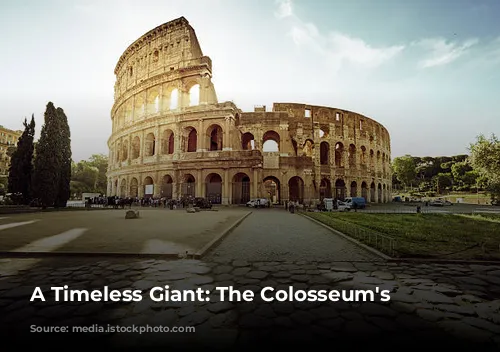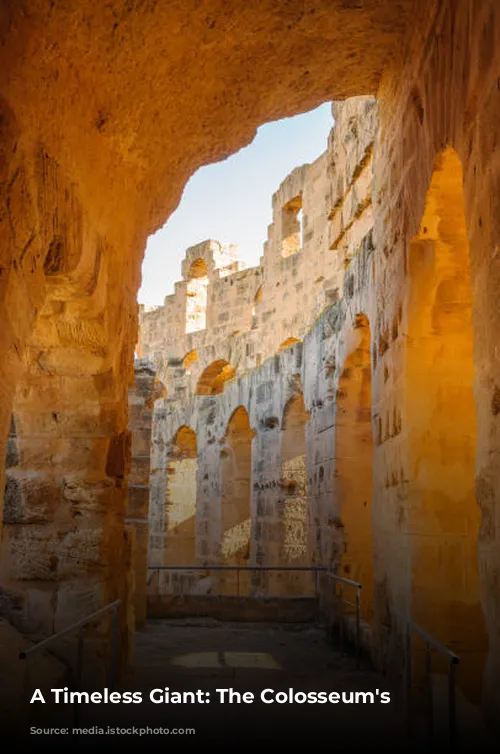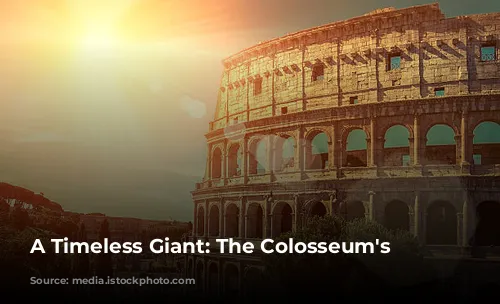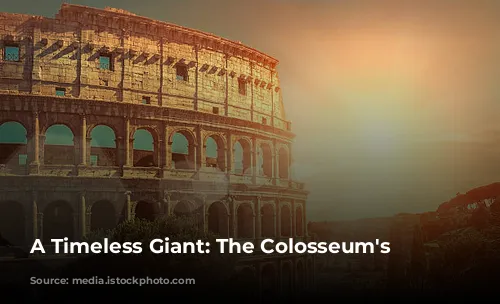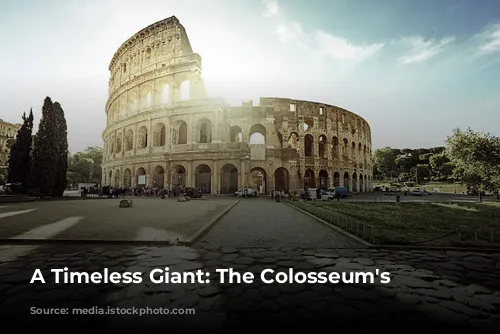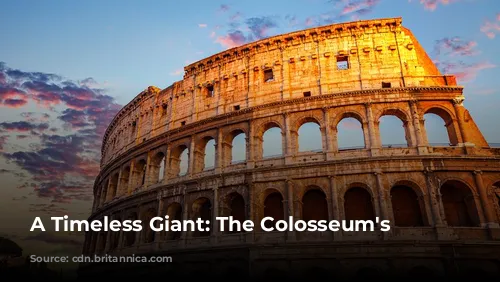The Colosseum stands tall, a testament to the ingenuity of ancient Rome, its grandeur echoing the power of the Roman Empire. This remarkable structure, one of the few remaining almost fully intact from that era, is a potent reminder of the architectural and engineering prowess of the ancient Romans. Beyond its historical significance, the Colosseum also generates substantial income for the Italian government, attracting millions of visitors each year. In 2018 alone, the Colosseum, the Roman Forum, and Palatine Hill collectively raked in over €53.8 million, making them Italy’s top tourist attraction.
From Glory to Neglect and Revival
The Colosseum’s journey has been marked by both glorious triumphs and periods of decline. After the fall of the Western Roman Empire, the once magnificent structure fell into a state of disrepair. In the 12th century, the Frangipane and Annibaldi families, powerful Roman families, seized control of the arena, transforming it into their fortress. Sadly, in the late 15th century, Pope Alexander VI allowed the Colosseum to be used as a quarry, stripping away its precious materials. For over a thousand years, the once glorious amphitheater endured neglect. However, hope emerged in the 1990s with the initiation of state-funded restoration efforts, breathing new life into this ancient monument.
A Legacy of Entertainment and Imperial Power
The Colosseum’s construction was a grand project initiated by the Roman emperor Vespasian, a symbol of imperial ambition aimed at revitalizing Rome after the tumultuous period of the “Year of the Four Emperors” in 69 CE. Just like other amphitheaters of the time, the Colosseum was envisioned as an entertainment center for the Roman people, where thrilling spectacles like gladiatorial contests, animal hunts, and even mock naval battles captivated the crowds.
Built With Blood and Stone
The Colosseum’s construction began under Vespasian’s rule between 70 and 72 CE. Its completion was celebrated in 80 CE under the reign of Titus, Vespasian’s son and successor. Further additions were made in 82 CE by the emperor Domitian, who completed the fourth story of the arena. It is crucial to acknowledge that the Colosseum’s funding came from the spoils of Titus’s conquest of Jerusalem in 70 CE. The construction was undertaken by enslaved Jews from Judea, a grim reminder of the Roman Empire’s brutal expansion.
A Colossal Structure, a Colossal Legacy
The Colosseum, also known as the Flavian Amphitheatre, is a massive elliptical structure built with stone, concrete, and tuff. It rises four stories high, spanning an impressive 620 by 513 feet (189 by 156 meters). Its sheer size allowed it to accommodate a staggering 50,000 spectators. The Colosseum’s fame stems largely from its use as the stage for gladiatorial combat, a spectacle that captivated the Roman world.
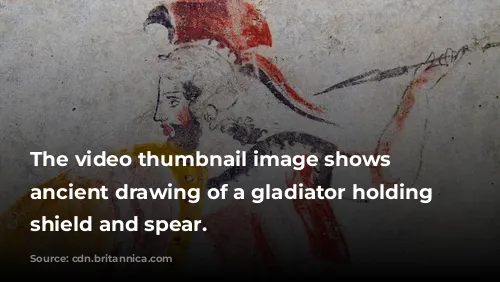
A Symbol of Power, a Place of Spectacle
Located just east of the Palatine Hill, on the grounds of Nero’s former “Golden House”, the Colosseum stands as a bold statement. The artificial lake that once graced Nero’s opulent palace was drained, and the Colosseum was constructed on its site, a decision that was as much symbolic as practical. Vespasian, a ruler who rose to power from humble beginnings, chose to replace Nero’s lavish private lake with a public amphitheater. This decision served as a powerful symbol of his commitment to the Roman people, a stark contrast to the tyrannical rule of his predecessor.

A Monument to Roman Engineering
The Colosseum is a marvel of engineering. Unlike previous amphitheaters, which were often built into hillsides for support, the Colosseum stands as a freestanding structure, relying on a complex system of barrel and groin vaults. Its grand facade features three tiers of arcades adorned with engaged columns in the Doric, Ionic, and Corinthian orders. The Colosseum’s architectural grandeur played a significant role in the Renaissance’s codification of the assemblage of orders, a principle of architectural design. The Colosseum’s construction is a testament to Roman architectural ingenuity and its lasting influence.
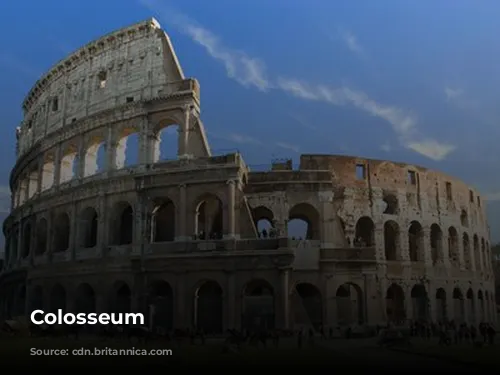
A Colossal Arena, a Shield from the Sun
The Colosseum could accommodate approximately 50,000 spectators who were shielded from the relentless Roman sun by a retractable awning called a velarium. Supporting masts extended from corbels built into the top story of the Colosseum. Hundreds of Roman sailors were employed to manipulate the rigging that extended and retracted this massive awning. The Colosseum was the scene of countless gladiatorial combats, contests between men and animals, and even mock naval battles, showcasing the variety of entertainment offered to the Roman people. However, the question of whether early Christians were martyred within the arena remains uncertain.
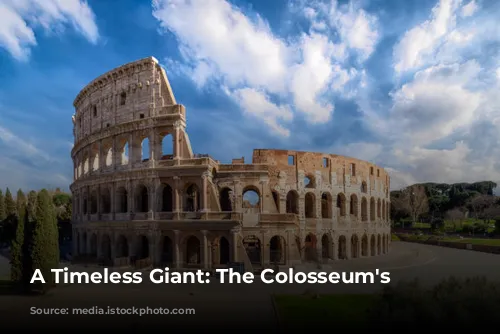
From Glory to Decay, and a Journey to Preservation
During the Middle Ages, the Colosseum’s fate took a turn. It was first utilized as a church, later serving as a fortress for powerful Roman families like the Frangipane and the Annibaldi. However, time and neglect took their toll on the ancient arena. Earthquakes, lightning strikes, and vandalism left their mark. The once magnificent marble seats and decorative materials were systematically stripped away, leaving the Colosseum a mere quarry for over a thousand years.
Thankfully, in the 19th century, preservation efforts began in earnest, with notable contributions from Pope Pius VIII. The 1990s witnessed a significant restoration project, breathing life back into this ancient monument. Today, the Colosseum remains one of Rome’s most popular tourist attractions, drawing in millions of visitors annually. The arena’s history is brought to life through regular exhibitions exploring the culture of ancient Rome, ensuring that its legacy continues to inspire and educate generations to come.
